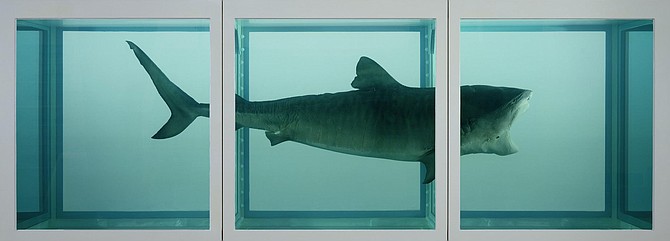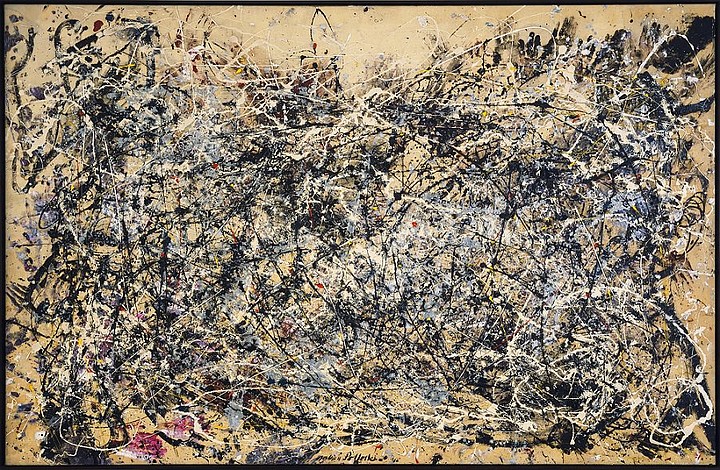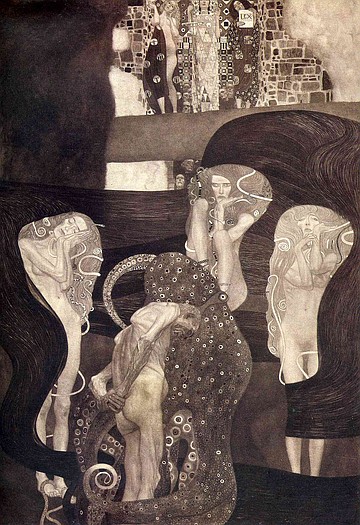 Facebook
Facebook
 X
X
 Instagram
Instagram
 TikTok
TikTok
 Youtube
Youtube

The Physical Impossibility of Death in the Mind of Someone Living. This is the title of a piece of art from 1991 by Damien Hirst. The work of art is a tiger shark in a tank of formaldehyde. There are obvious questions which come to mind. Shouldn’t this be in a natural history museum instead of an art gallery? Is every biology classroom in the country actually a refuge of art because there are animals preserved in formaldehyde? Why does the title say the same thing twice?
I’m bringing up the subject of conceptual art as a reference for conceptual music. The physical arts and music have been mates for centuries.
Music from the classical period is identified as having form, balance, and proportion. Art from the same period is typified by form, balance, and proportion. Romantic music and romanticism go hand in hand. The romantics are all about strong feelings in nature. They’re about liberty and brotherhood. They are against subjugation.
That’s Beethoven 101, folks. Here's a brief intro to Romanticism.

It goes on and on. We can look at Mahler’s music and Klimt’s now-destroyed Jurisprudence. We can discuss Debussy and Monet. Pollock’s paintings are the visual version of Threnody for the Victims of Hiroshima by Penderecki. Or maybe Penderecki's music sounds like Pollock’s painting.
John Cage thought the sounds of traffic on 5th Avenue in New York were music. How is that different than Warhol’s soup cans? By putting soup cans in a museum we are asked to look at them in a different way, just like Cage is asking us to listen to traffic in a different way.
The conceptualization of art has intensified and so has the music. That something is in a museum or art gallery creates the discussion. Theoretically we could place anything in a museum and it would be art because we could have the discussion about why it is there. Were someone to leave the wrapper of a candy bar on the floor of a museum we could have a conversation about why this is art.
I’m not against this type of thing even though I feel it is more like doing philosophy in an artful way. This could be the best way to do philosophy. Some would say that is the only way to do philosophy.
Why are we now considering a shark with a tautological title? I don’t think music works in the same way. Music isn’t a physical object in the way a piece of art is — or a candy wrapper is.
If I look at the shark and I “don’t get it” or think it’s stupid or “not art” then I can move along to something else. The shark stays put and that’s that. Or I can stay with the shark for as long as it takes for me to come to a realization. Or I can leave the shark and then come back to it later with a different perspective. The key factor here is time.

If I “don’t get” a new piece of music I am forced to stay in my seat or stand up and walk out of the concert hall declaring to the entire audience that “I don’t get it”. I can’t “come back” to the music by asking the performers to play it again after I’ve listened to the rest of the concert. The key factor here is also time. Music interacts with time in a different way than physical art.
I’ve been in a few concerts and opera productions of new-ish music. After several weeks of rehearsal and living with the music for a few hours a day, I usually get it. The audience never has that luxury.
With art, I could come back to the museum a year later and experience the shark as a more mature and experienced person. I can’t come back to a new piece of music in the same way. If there is a recording, that’s an option, but it still isn’t the same as returning to the same exact piece of art.


The Physical Impossibility of Death in the Mind of Someone Living. This is the title of a piece of art from 1991 by Damien Hirst. The work of art is a tiger shark in a tank of formaldehyde. There are obvious questions which come to mind. Shouldn’t this be in a natural history museum instead of an art gallery? Is every biology classroom in the country actually a refuge of art because there are animals preserved in formaldehyde? Why does the title say the same thing twice?
I’m bringing up the subject of conceptual art as a reference for conceptual music. The physical arts and music have been mates for centuries.
Music from the classical period is identified as having form, balance, and proportion. Art from the same period is typified by form, balance, and proportion. Romantic music and romanticism go hand in hand. The romantics are all about strong feelings in nature. They’re about liberty and brotherhood. They are against subjugation.
That’s Beethoven 101, folks. Here's a brief intro to Romanticism.

It goes on and on. We can look at Mahler’s music and Klimt’s now-destroyed Jurisprudence. We can discuss Debussy and Monet. Pollock’s paintings are the visual version of Threnody for the Victims of Hiroshima by Penderecki. Or maybe Penderecki's music sounds like Pollock’s painting.
John Cage thought the sounds of traffic on 5th Avenue in New York were music. How is that different than Warhol’s soup cans? By putting soup cans in a museum we are asked to look at them in a different way, just like Cage is asking us to listen to traffic in a different way.
The conceptualization of art has intensified and so has the music. That something is in a museum or art gallery creates the discussion. Theoretically we could place anything in a museum and it would be art because we could have the discussion about why it is there. Were someone to leave the wrapper of a candy bar on the floor of a museum we could have a conversation about why this is art.
I’m not against this type of thing even though I feel it is more like doing philosophy in an artful way. This could be the best way to do philosophy. Some would say that is the only way to do philosophy.
Why are we now considering a shark with a tautological title? I don’t think music works in the same way. Music isn’t a physical object in the way a piece of art is — or a candy wrapper is.
If I look at the shark and I “don’t get it” or think it’s stupid or “not art” then I can move along to something else. The shark stays put and that’s that. Or I can stay with the shark for as long as it takes for me to come to a realization. Or I can leave the shark and then come back to it later with a different perspective. The key factor here is time.

If I “don’t get” a new piece of music I am forced to stay in my seat or stand up and walk out of the concert hall declaring to the entire audience that “I don’t get it”. I can’t “come back” to the music by asking the performers to play it again after I’ve listened to the rest of the concert. The key factor here is also time. Music interacts with time in a different way than physical art.
I’ve been in a few concerts and opera productions of new-ish music. After several weeks of rehearsal and living with the music for a few hours a day, I usually get it. The audience never has that luxury.
With art, I could come back to the museum a year later and experience the shark as a more mature and experienced person. I can’t come back to a new piece of music in the same way. If there is a recording, that’s an option, but it still isn’t the same as returning to the same exact piece of art.
Comments